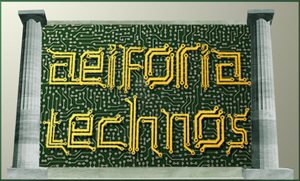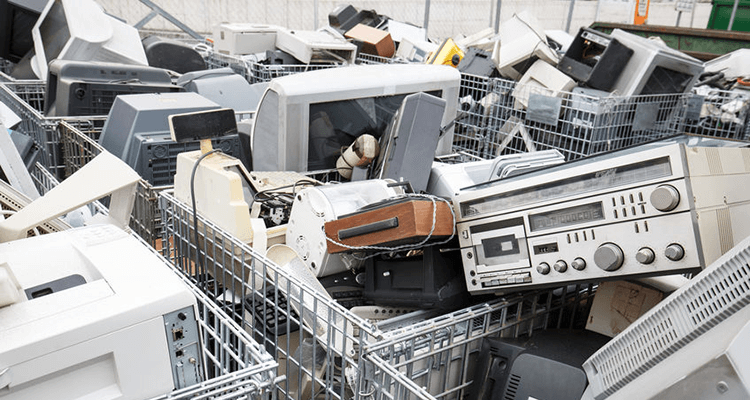Pick-A-Part
 So a number of the news blurbs I came across related to this year’s Earth Day surrounded the growing scourge of e-waste. A main example was cell phones and how often people are changing out their devices to get the newest features or because of the inefficiencies of their older device.
So a number of the news blurbs I came across related to this year’s Earth Day surrounded the growing scourge of e-waste. A main example was cell phones and how often people are changing out their devices to get the newest features or because of the inefficiencies of their older device.
A typical cell phone has a life span of 18-24 months for several physical reasons beyond the craving for the latest gadget. The battery life seems to be decreasing not increasing as operating systems and feature sets demand more juice to power. I see evidence in this through the rise of portable power packs located at what seems like every retail store cash wrap and the race to find a charging station or wall plug at airports, restaurants, coffee shops and shopping mall food courts. As a phone ages the ultra fine wire traces in the circuit boards deteriorates causing inefficiencies in power usage. Additionally the processor often can’t handle the speeds required to operate a new operating system causing buffering, delays, crashes, etc. Screen resolution, camera mega pixel density and other attributes often can become inefficient of non-functioning. As I have written in previous articles about planned obsolescence, much of this is be intentional design by manufacturers to keep profits rolling in while other causes are the abuse we put our devices through.
What happens to these devices depends on your habits. They usually (if you are like many) toss them in a drawer to either be forgotten about or until you have a large enough batch of electronics that you can responsibly recycle them (*cough*). Some retailers will take your old cell phone on the spot to be re-purposed (resold to developing countries) or recycled. Lastly, some keep their devices and strip away all of the apps and reuse them as Wi-Fi enabled security cameras, baby monitors or even as a “toy” phone for their young kids.
But what if you like your cell phone and don’t want to give it up or the thought of contributing to the e-waste scourge makes you break out in hives? There are two routes really. One is to never update your operating system from the original one, keep your apps download habit to a minimum, and religiously unplug your phone as soon as it hits a full charge to minimize overcharging or over heating the battery reducing its life (and locate a good source of replacements on eBay). I have actually done this with an old Windows phone with good success of going on five years with it but with a non-replaceable battery it is seeing its last days.
The second route is a challenge being taken on by Google and others in creating a new phone with interchangeable parts. Don’t like or want to upgrade your camera? Swap out a new camera module. Need a new processor to handle the latest Android OS? Swap out a new chip module. Crack your screen or want better resolution? Replace it with a new screen module. Called Project Ara, it is Google’s attempt to address several of the issues related to what other manufacturers seem to want to ignore. It also helps Google who is a giant in green manufacturing stay true to a core value of being environmentally friendly. This will in their mind help to lower the cost of cell phones as you will be buying separate components to upgrade rather than a whole device and help to reduce the e-waste stream by reducing the amount of obsolete devices.
So let’s leap to the Pro AV world. There are some manufacturers who have realized that in order to keep a presence in a consumer’s mind they need to be nimble and offer products that can be upgraded quickly, efficiently, and without a lot of cost. By offering a component level replacement, end users can gain the benefit of the latest feature set without much upfront cost or having to depart with a working system they like. A good example of this is Christie Digital has a line of projectors (Boxer 2K Series) that allow you to swap out components to say a 4K module at a later date if you are not ready for 4K yet without having to replace a projector you rely on or even increase the brightness. This not only provides immediate benefit to the end user but works to reduce that product stream obsolescence keeping out of e-waste. This works to support Christie’s deep commitment to sustainability and can help build and maintain brand loyalty.
Samsung had another good example of this back in 2012 when they released an upgradable consumer TV (Samsung ES8000) at CES that provided an expansion slot to allow new hardware and features to be included as well as having the ability to upgrade firmware. This allowed consumers who buy way more TVs than in pro installs to have the ability to upgrade without having to throw out a large, expensive piece of equipment. Certainly we have seen some of this as well with Crestron and AMX in the matrix switchers being able to upgrade the processor to handle 4K and add some features.
Hopefully the future bodes well for more products to be able to be upgraded without having to be tossed out or recycled entirely. This would potentially go a long way towards reducing the volume of discarded electronics that is generated each year (54 million tons in 2015).





